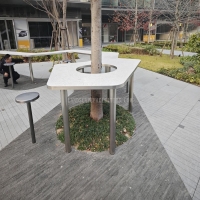Welcome to the website for landscape facilities products and knowledge.
What are the options for adding built-in augmented reality or interactive features?
Augmented reality (AR) and interactive features are transforming digital experiences across industries, from retail and gaming to education and manufacturing. If you're looking to integrate built-in AR or interactive capabilities into your applications or platforms, several powerful options are available. The choice depends on your technical resources, target audience, and project goals.
One primary avenue is utilizing dedicated AR Software Development Kits (SDKs). Platforms like Apple's ARKit for iOS and Google's ARCore for Android provide robust frameworks for creating sophisticated AR experiences. These kits offer features like motion tracking, environmental understanding, and light estimation, allowing developers to build applications that seamlessly blend digital content with the real world. For cross-platform development, tools like Unity with the Vuforia engine are popular choices, enabling the creation of AR experiences that can run on multiple devices.
Another significant option is Web-based AR, which allows users to access augmented reality experiences directly through a web browser without needing to download a dedicated app. This is often achieved using WebXR, an API standard designed for delivering virtual and augmented reality content on the web. This approach dramatically lowers the barrier to entry for end-users, making it ideal for marketing campaigns, product visualizations, and educational content.
Beyond these, many no-code and low-code platforms are emerging, empowering creators without deep programming expertise to build interactive and AR features. These platforms often provide drag-and-drop interfaces and pre-built templates for creating AR product demos, interactive manuals, or immersive storytelling experiences. Furthermore, the rise of social media filters and lenses, through platforms like Snapchat and Instagram, offers a built-in, user-friendly way for brands to create engaging, interactive AR content that can go viral.
Ultimately, the best option hinges on your specific needs. For high-performance, native mobile applications, dedicated SDKs are the way to go. For maximum accessibility and reach, WebAR is a compelling choice. And for rapid prototyping and marketing-focused projects, no-code platforms and social media integrations provide effective and efficient solutions. The key is to align the technology with a clear user experience goal to create truly valuable and engaging interactions.
Related search:

Recommendation
An outdoor bar counter with stainless steel and terrazzo materials in an irregular shape